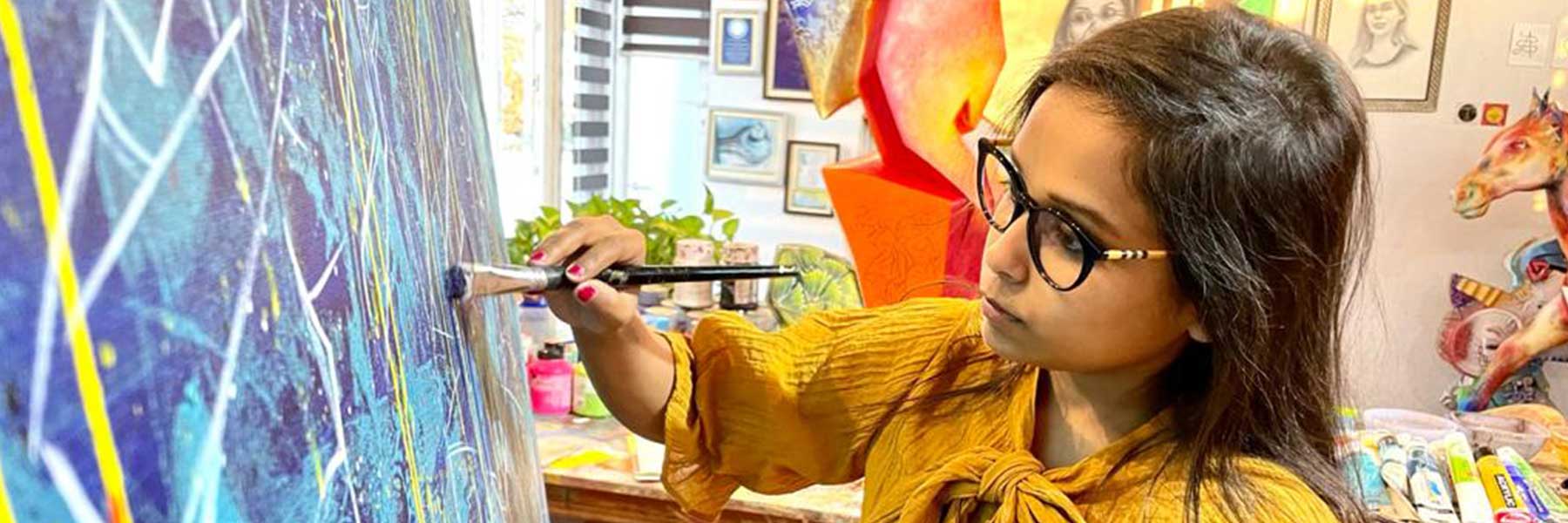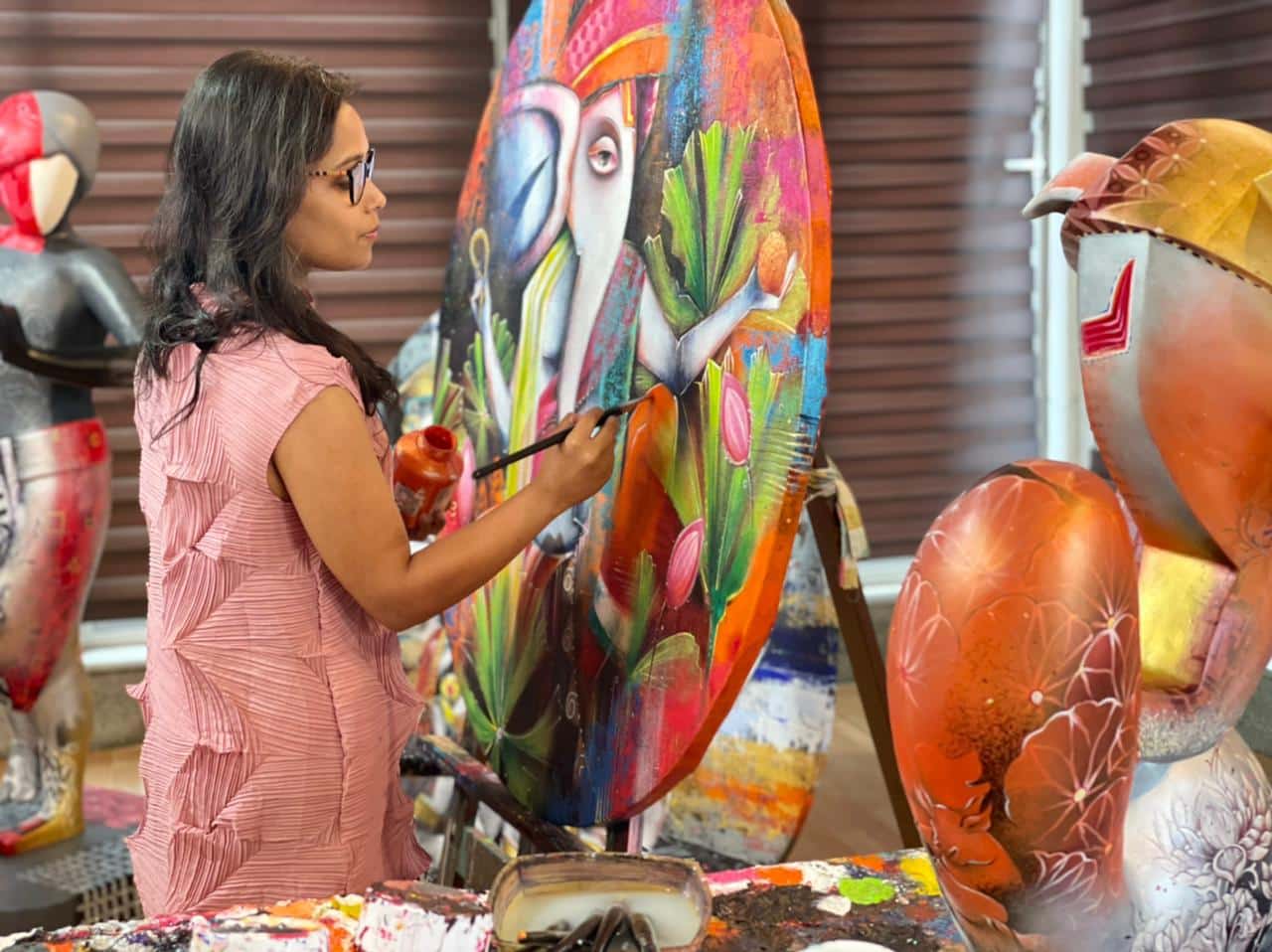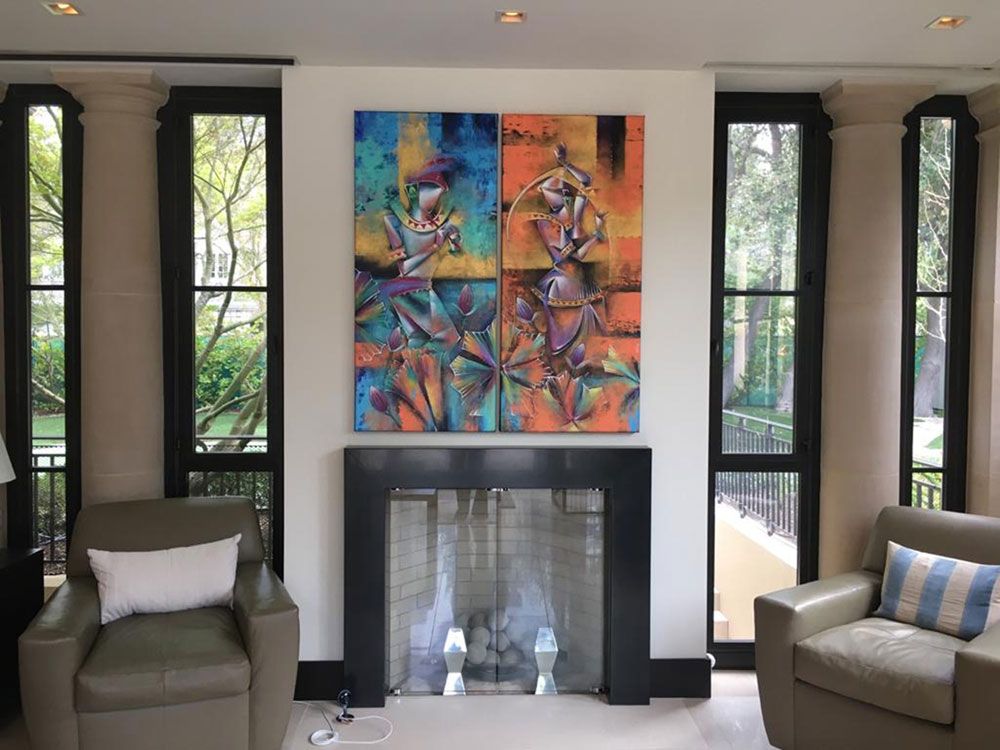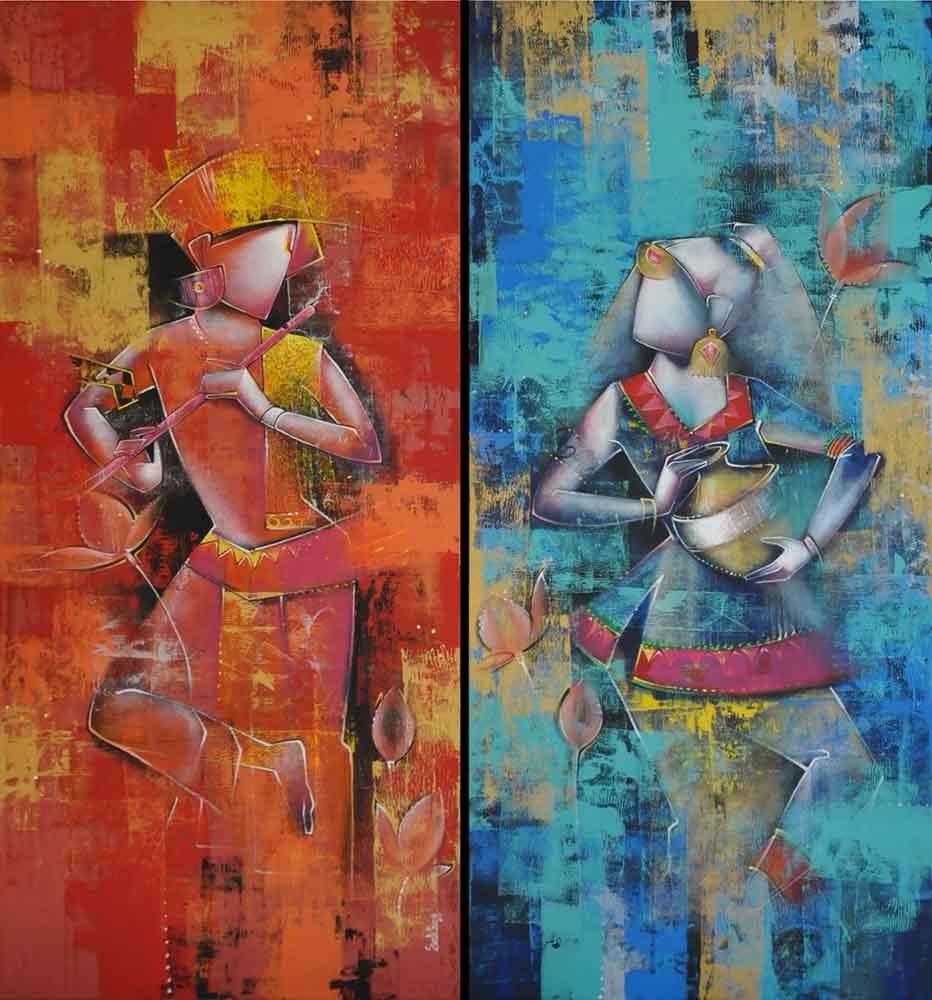
INTERVIEW WITH CONTEMPORARY INDIAN ARTIST SWATI PASARI
The up-and-coming Indian artist Swati Pasari has always heeded her inner callings rather than following the norm. In fact, she broke with tradition and gave up her family business in order to pursue contemporary art after college. She has since become known for vibrant canvases and fiberglass installations peppered with various sacred figures, such as Lord Buddha and Lord Ganesh. Over the past few years, Swati has also extensively depicted Radha Krishna, typically on two separate panels. As a Pranic Healing practitioner in addition to being a painter and sculptor, she credits her spiritual leanings and her grandfather’s advice for her successful career.
In this recent interview, Swati shared more about how her spiritual practices have informed her works, the symbolism behind her Radha Krishna paintings, and why it was difficult to break through the Indian art gallery scene.

Before pursuing art, you studied business in order to join the family trade. How did you realize art was your true calling?
I am a self-taught artist, but first I studied commerce. When I returned from college in Australia, I joined my family business. But I found the ‘soul connect’ missing. And that’s how I began practicing Pranic Healing. While I have always painted, I did not think of art as a profession for a long time. While meditating and pursuing the Pranic Healing courses, however, I realized art is the purpose of my life. It took a lot of courage to go off the treaden path, but I chose to digress as I wanted to live a fulfilled life.
This strong spiritual streak is evident in your art. How does Pranic Healing inform your art?
Pranic Healing is an energy-based spiritual school, of which I have been a part over the last 12 to 13 years. Not only did this practice inspire me to become an artist, but it has helped me get close to my soul, to understand the purpose of my life. I follow a lot of spiritual beliefs such as the Law of Karma, which says you attract what you offer to others.

How has your art evolved over the last 13 years?
I began by painting Lord Ganesh and then went on to paint the Buddha series. What I choose to paint often reflects the different phases of my life. When I was painting the Buddha series, I was at peace with myself. Slowly, as I connected deeper with my soul, I painted my first Radha-Krishna painting. Within, I felt complete as an individual.

One of your most popular themes is Radha Krishna currently. What draws you to these figures?
I depict love and happiness in my art. Whether on canvas or in installation, there is a lot of layered meaning underneath Radha and Krishna. There are several layers of colours you see on my canvas that symbolize how, as humans, we live buried underneath several layers. The closer we get to our soul, the more we get rid of those layers. My art depicts a connection with the soul and represents the concept of infinite love.
I remember while meditating one day, I saw Krishna. At that point, I wasn’t sure how to physicalize him in my art. I set out to research and experiment, and that’s when I understood there is a hidden message from the Higher Power, who is trying to connect me to the subject.
Your paintings often feature musical instruments, such as dhols, flutes and a lot of dancing, which recalls Krishna devotees. What do you think about the connection between art and music?
Art and music are very soulful practices. I have tried to depict souls playing the music, celebrating life and connecting to the Higher Power, rather than mere figures. While working, I listen to a lot of chants or instrumental music, which transports me into a peaceful zone and that peace reflects on the canvas.
Swati adding texture to her canvas with acrylic paint on a roller.
What is your average day like as an artist? How do you ‘get into the zone’ to paint?
Discipline is very important to ensure the best use of time, but I don’t follow any specific routine. I like to start my day with my paint and canvases and spend most of my mornings and afternoons in my studio, either sketching or painting. I feel I exist in some sort of a bubble while working.

What have been the high and low points of your life, and how have you handled the lows?
As an artist, life was very challenging for the first seven to eight years. Initially, it was difficult to gain acceptance from the art community and the contemporary Indian art market. Often as an early career artist, your works don’t sell, or galleries do not offer opportunities to exhibit or sell your work.
My grandfather asked me to continue painting. He believed that one day, eventually, things will fall in place. So I have always tried to keep myself in high spirits.

What does success mean to you?
Success means to me a complete life — one that is enriched both emotionally and spiritually. I celebrate each day of my life. That is success as per me, as I choose to be happy.
That is very inspiring! Thank you, Swati.
If these soulful works have inspired you too, please visit https://laasyaart.com/swati-pasari/ to browse through our collection of contemporary paintings by artist Swati Pasari online. If you would like to make an appointment to see these works in person at our Indian art gallery in Palo Alto, please reach out at info@laasyaart.com or +1 650-770-9088.
— Sonia Nayyar Patwardhan

Leave a Reply
You must be logged in to post a comment.